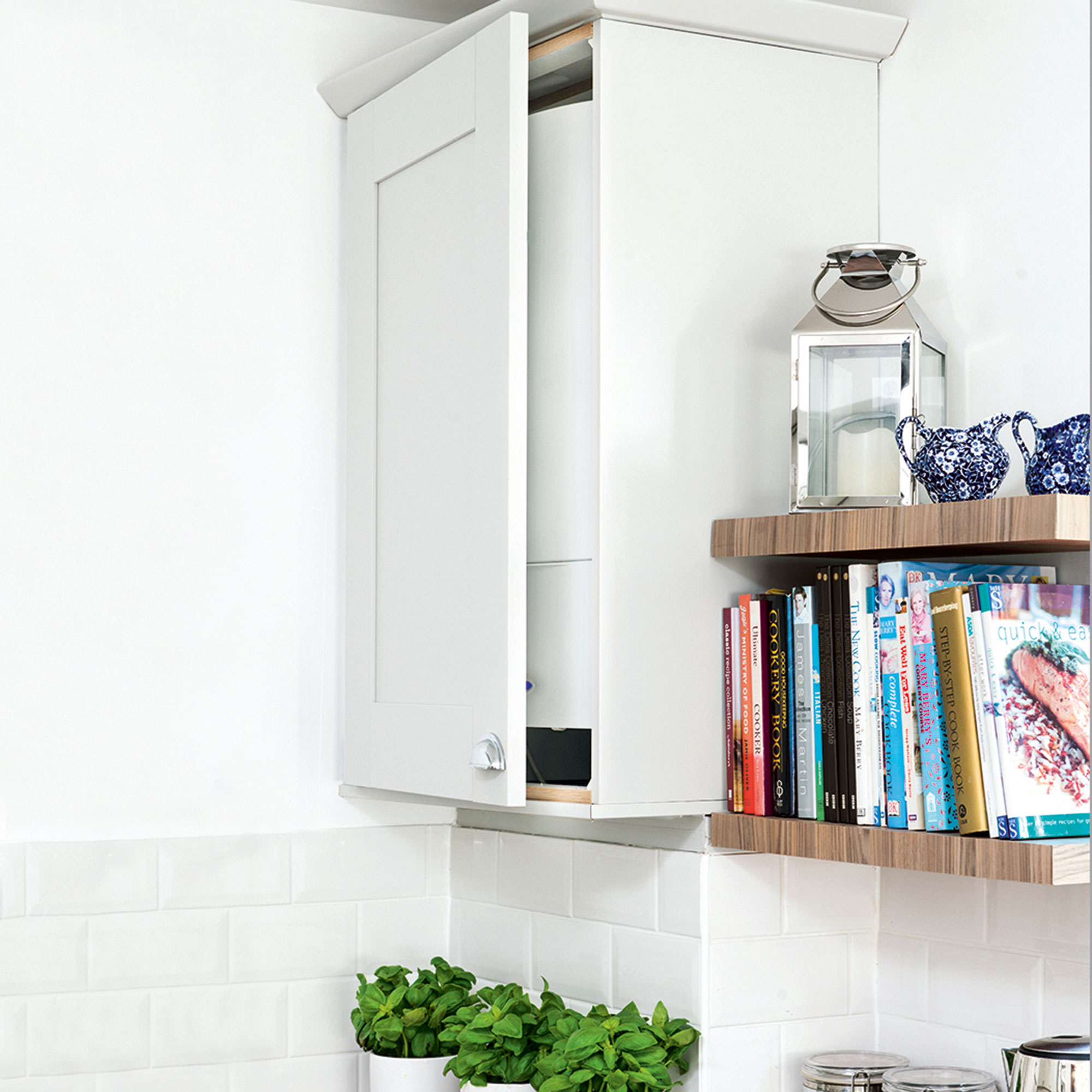7 tasks you should add to your winter home maintenance checklist
From bleeding your radiators to getting rid of draughts, the experts reveal their top suggestions


Preparing your home for the winter months can seem arduous when you're trying to tick tasks off your winter home maintenance checklist. But as the weather gets colder and we rely on our heating and radiators more, all while extreme weather conditions are often taking place outside, the last thing that you’ll want to discover is that your home isn’t staying as warm and cosy as it should, or that water or draughts are making their way inside.
Which is why now is the perfect time to check off some home maintenance tasks to make sure you don’t encounter any of these issues over the colder months and to help keep your house warm.
‘It’s always better to be safe than sorry when it comes to weather-proofing your home. There’s nothing worse than having to deal with a leaking window, burst pipe or malfunctioning boiler in the middle of winter,’ explains Phil Wood, UK country manager at Contura. ‘We naturally spend more time indoors during cold, wet weather and our homes need to be well-equipped to see the winter through in comfort.’
Many of us will also be conscious of the amount it will cost to run central heating and heat our homes, as the cost of living crisis continues.
7 tasks to add to your winter home maintenance checklist
Here’s a list of the most timely home maintenance tasks to take care of now to set you up for the rest of winter and into the new year.
1. Bleed your radiators
Ideally you should be bleeding your radiators once a year and since the winter months will probably be when your radiators are used the most, now is as good a time as any. ‘Bleeding your radiators will ensure that there is no trapped air inside, which can cause poor circulation and mean that your heating may not be working effectively,’ Tim warns.
If you’re wondering whether you need to bleed your radiators or not, ‘simply feel if your radiators are cool at the top and hot at the bottom,’ Make My Blinds’ interior stylist, Colette Toman says. This is a sign that your radiators aren’t working as efficiently as they should be and could be a reason why your radiators aren't heating up.
2. Get rid of draughts

According to Colette, ‘up to 24% of a home’s heat energy is lost through draughts,’ with windows, doors, letterboxes, loft hatches, floorboards and fireplaces and chimneys being some of the most common areas that heat can escape from. And the last thing you want is for warm air to escape during the winter months.
You can do a quick check by running your hand across windows, doors and any gaps you may have found, to feel for any cold air coming in.
There are plenty of DIY draught proofing measures to take. ‘For windows, you can buy draught-proofing strips that can be fitted around the frame of the window to fill in any gaps,’ say the experts at Toolstation. ‘For doors, you can attach draught excluders to the bottom to plug the gap between the door and the floor. These are most commonly heavy-duty brush strips for interior doors and rain guards for exterior doors.’ You can also fit draught excluders around letterboxes to stop the chilly winter air from getting in.
3. Clean your gutters

As many of the trees shed their leaves over autumn and winter, this means that leaves and twigs can easily fall down into your gutters and cause issues. You don’t want to wait until the weather gets even colder, or rain and snow stops you from getting outdoors, before tackling cleaning gutters as part of your home maintenance.
‘Natural debris from leaves, twigs and moss can lead to a blockage in your gutters, which may lead to dampness in your home, if water starts to run down the exterior walls, instead of flowing through the pipes. This can also cause leaks and even flooding,’ Colette explains.
It’s also worth making ‘sure the end section of the guttering (where rainwater drains from) is positioned away from your house by a few feet to ensure water runs away from the property,’ Phil explains. And double check that there are no overhanging branches from neighbouring trees that could cause your gutters to clog as well.
4. Check your roof

Another issue that could cause leaks is maintaining your roof. ‘Roofs bear the brunt against adverse weather conditions so it is extremely important that your roof is fully inspected over the winter months to ensure it is structurally sound and can withstand the harsh weather,’ explains roofing and insulation expert, Grant Findley, from Findley Roofing.
Be on the lookout for any missing or damaged shingles. ‘Loose or broken tiles, or other repairs that are needed, can cause intermittent leaks as the weather worsens. It’s vital to address these issues before damage occurs,’ MyBuilder.com’s trade expert, Andy Simms, outlines.
While you may want to call in the professionals to do a more thorough check of your roof, keeping ‘on top of minor roof repairs can prevent structural issues and mould caused by roof leaks,’ Grant concludes.
5. Check/service your boiler

Firstly, ‘if you haven’t had your boiler serviced this year, it’d be a good idea to get that done as soon as possible,’ according to the experts at BOXT. ‘Not only does an annual boiler service ensure your manufacturer’s warranty remains valid, but it also provides you with the peace of mind that your heating system is working as it should be.’
You can also examine your boiler’s pressure level to ensure that your boiler is working efficiently. For example, ‘if the gauge is in the red zone (too high or too low), then your hot water and heating might cut off and it could cause damage to the boiler,’ the experts add. If it’s too high, try bleeding your radiators to relieve some of the pressure.
6. Insulate where necessary
‘You want to avoid paying to heat the air in your house and letting it go straight out,’ says Dave Raval, CEO of Loftzone. ‘Heat rises and in a typical British home 25% of your heat goes out through your ceiling, into your loft and out through the roof. Insulation stops this by acting as the woolly hat for your home.’
‘Insulation being installed improves the heat retention in your home and keeps your energy bills down. Not only that, but it keeps your house cool through the summer, too, so it’s a year round investment,’ Andy maintains.
When looking for ways to insulate your home, you can also insulate your pipes, which is especially helpful at this time of year. You can buy insulation tubes from most DIY retailers, or online and they will help to ‘prevent heat from escaping as the hot water travels through your pipes. It can also stop your pipes from freezing if temperatures become even colder,’ Colette reveals.
7. Sweep your chimney

‘If you have a fireplace in your home, lighting the first fire of the season is always exciting,' Andrea admits. However, ‘it’s worth having your chimney swept before throwing in the firewood and lighting those matches, to ensure that there is no soot or creosote build-up.’
‘If you have a working fire or log stove/burner, sweeping it will help to improve its efficiency and aid in the prevention of fires by removing blockages or any build-ups of soot,’ Tim concurs.
This may be a task that you want to outsource to the professionals but having your chimney swept should definitely be on your list of winter home maintenance tasks to complete. As Tim explains, ‘it may be best to hire a professional for this task, as they can provide you with certification on completion that can be used if you ever need to contact your home insurance in the event of a chimney fire. It can also reveal if there are any potential issues with your chimney that need fixing.’
‘Availability of chimney specialists will be more limited as the weather gets colder, so get booked in fast to make the most of your fire - safely - this winter,’ Andy concludes.
Get the Ideal Home Newsletter
Sign up to our newsletter for style and decor inspiration, house makeovers, project advice and more.

Ellis Cochrane has been a Freelance Contributor for Ideal Home since 2023. Ellis has been writing about homes, interiors and gardens for four years now, with her also contributing to House Beautiful, Country Living, Expert Reviews, Real Homes and Stylist.
-
 Wood drenching is the calming new twist on the colour drenching trend – here’s how to make the look work in your home
Wood drenching is the calming new twist on the colour drenching trend – here’s how to make the look work in your homeIt’s easier than ever to embrace natural materials
By Maddie Balcombe
-
 Aldi is launching a £200 day bed with four different features - its sleek design is suited to the whole family
Aldi is launching a £200 day bed with four different features - its sleek design is suited to the whole familyYou don't want to miss out on this Specialbuy
By Kezia Reynolds
-
 How to set up a drip watering system that saves water and a lot of effort
How to set up a drip watering system that saves water and a lot of effortKeep your plants hydrated (and your water bill down) with this clever garden watering solution
By Natalie Osborn